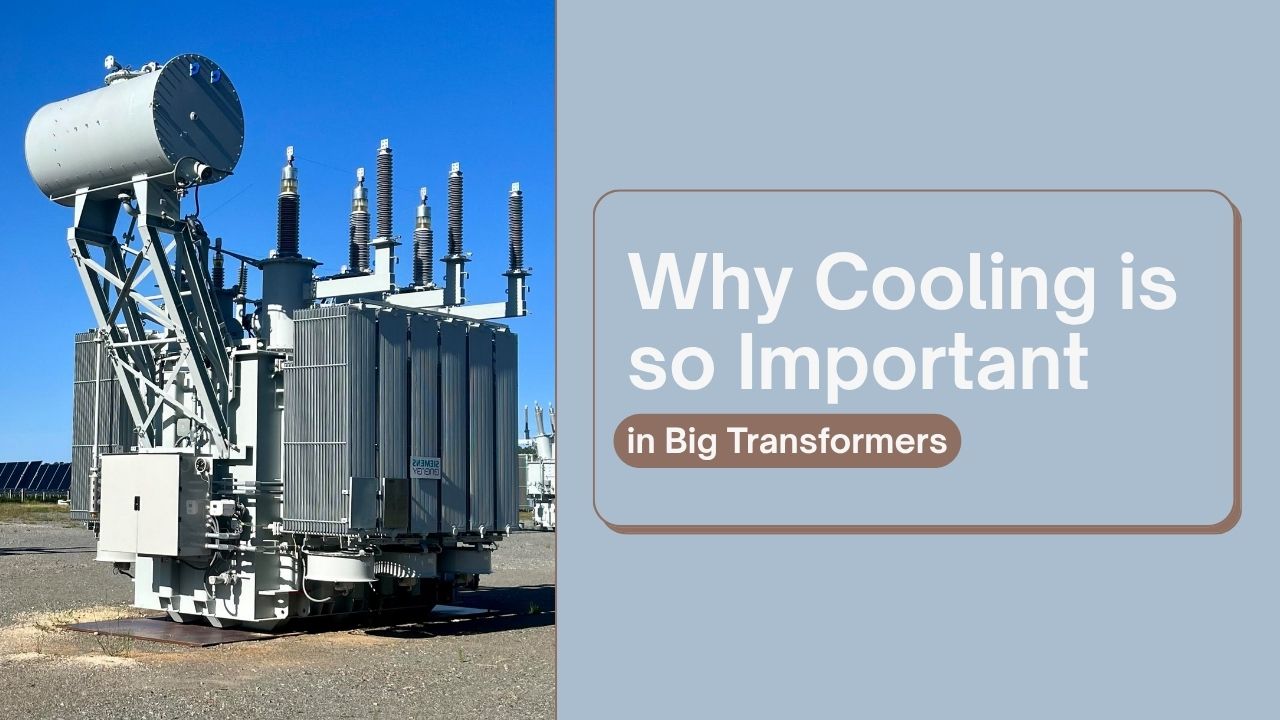

Transformers don’t give off warnings the way machines with moving parts do. No noise, no friction—just heat.
And in high-capacity transformers, heat adds up quietly. It seeps into insulation, affects winding strength, and weakens oil quality.
You may not notice it until the losses increase or performance slips.
This is why cooling isn’t just a maintenance feature. It’s an essential part of how big transformers work. Without it, even a well-built unit can start to drift from its designed behavior long before its rated life ends.
All large transformers generate heat during operation. Even when loads stay well within limits, core loss and copper loss build thermal stress over time.
Inside the coils and the core, that heat doesn’t just stay in one place—it spreads.
Temperature rise puts pressure on every part in contact with it. Paper insulation begins to age. Oil loses its dielectric strength. The windings carry resistance they didn’t carry before.
Cooling steps in to hold that entire chain together.
The effectiveness of a cooling system depends less on its rating and more on how it moves heat.
Placement of ducts, flow paths in the coil assembly, radiator size—these small factors shape how well heat escapes the active parts.
In oil-immersed designs, the oil must reach everywhere that heat is being created.
If circulation is uneven or ducting gets blocked by sludge, temperatures build up in places that the gauges don’t always catch right away.
A transformer might run fine during testing. But once it’s out in the field, temperature behaves differently.
You might have two identical units with two very different operating temperatures—just because one sits near a furnace or has low air flow around it.
In such cases, even a good design starts working harder. Cooling fans need to run longer. Radiators stop shedding heat as fast. Nearby heat sources amplify the problem.
These conditions reshape how the transformer ages and how much intervention it will eventually need.
When cooling slows down, heat doesn’t just stay in the windings. It pushes into connections, bushings, tap changers.
Those parts rely on stable temperatures to function without stress. Without proper cooling, the chance of internal faults increases.
Add in fluctuating loads or grid disturbances, and the transformer starts to carry more risk. That’s why leading transformer manufacturers in India emphasize advanced cooling systems in their designs.
Monitoring oil and winding temperatures helps, but what really keeps things stable is making sure heat never gets the chance to build in the first place.
Retrofitting the cooling system is one of the few ways to extend transformer life without changing the entire unit.
Additional radiators, stronger fans, or redesigned ducts give the transformer a better chance of running within healthy limits.
At our end, we’ve seen situations where cooling upgrades delayed a planned replacement by three years or more. Those extra years make a difference, especially when the transformer is tied to systems that can’t afford sudden interruptions.
Every big transformer runs a thermal race. The load pushes it forward. The cooling system holds it in check.
When that balance slips, everything else starts adjusting—oil, insulation, losses, and life span.
The most stable transformers are the ones where heat never gets to win. That’s something we pay attention to in our own work.
Whether it’s in the early design or in a late-stage retrofit, cooling remains one of the best ways to influence how long a transformer keeps doing its job without surprise.
Makpower, we engineer with that principle in mind—keeping transformers cool, stable, and built to last.